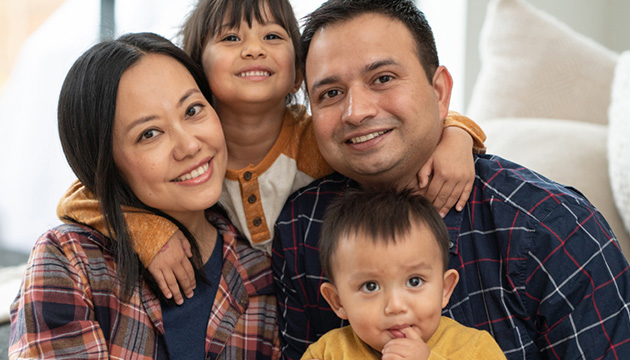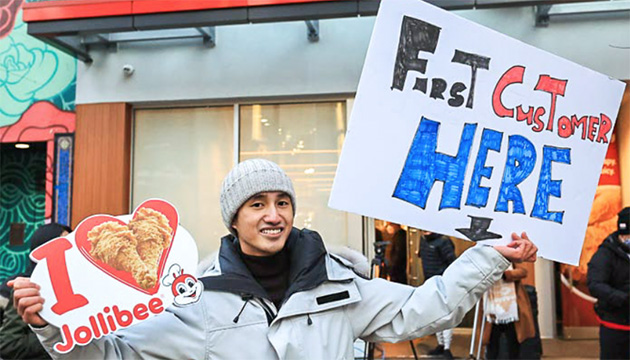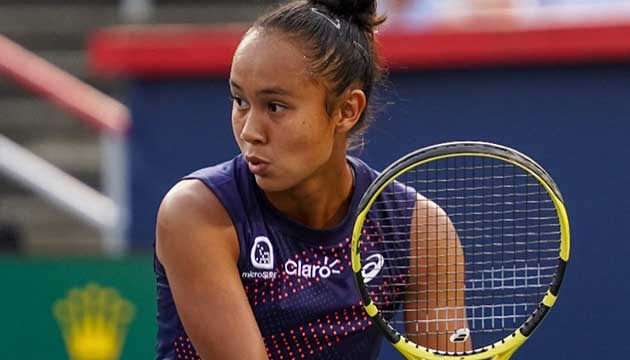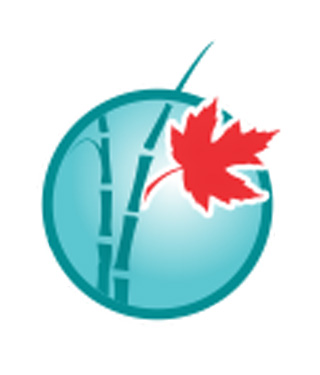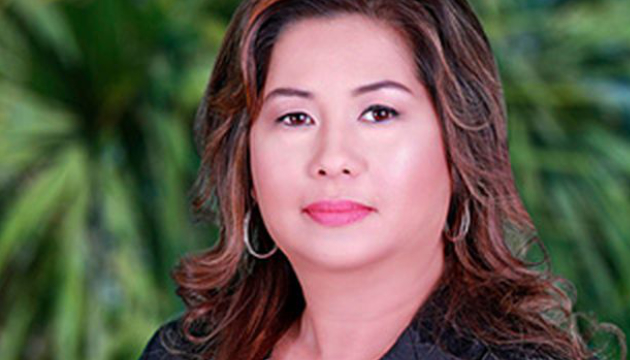In an earlier article, Eleanor Laquian drew our attention to growing dissatisfaction among Canadians about the country’s policies on immigration and multiculturalism which some blame for the rising xenophobia in what has always been seen as a peaceful and hospitable society.
She cited the findings of several opinion surveys which indicate that the majority of Canadians are now apprehensive about growing numbers of people of colour, the growth of hate crimes, the displacement of local workers in the labour market, and the fiscal burden imposed on the rest of society by those who come only to take advantage of Canada’s socialized health services and highly subsidized public education system. These concerns have armed some politicians, the most recent one from Quebec, with arguments for reducing Canada’s admission of new immigrants. There is a strong undercurrent of suspicion that the wave of new refugees especially from Muslim countries will not integrate with the rest of Canadian society because they hold values completely at odds with that of the majority.
Canada’s Points System, a Model
In this article I argue that Canada’s immigration policy has been looked upon as a model by many countries. The roots of the problems Eleanor cited may lie, not so much in the numbers and origins of the people we admit, but in how we manage their social and economic integration once they have come in.
Canada is widely credited with having a liberal, progressive and well-managed migration system. Under our Constitution, immigration is a shared responsibility between the federal government and the provincial governments. The federal government sets annual targets for admission of permanent residents following consultations with broad sectors of society. For example, the Conference Board of Canada recently advised that Canada’s immigration rate should increase to one percent of the population by 2030 in order to replicate its population growth rate of recent decades and ensure modest labour force and economic growth. The admission target for 2017 was in the order of 300,000 of which about 2 of every 3 are economic immigrants, 1 of every 4 are for family reunification, and 1 of every 8 are for protected persons or refugees. Canada pioneered the now widely imitated “points system” which aimed to make decisions on immigration admissions not discretionary but based solely on a set of objective criteria such as age, educational attainment, work experience in occupations in demand, employment offer, language skill and adaptability, and having a support system (i.e. relatives) in Canada.
The United Kingdom, Australia, New Zealand and Republic of Korea have since fashioned their own versions of the points system. Despite some shortcomings a number of features of Canada’s seasonal agricultural worker programme such as the organization of employer cooperatives to supervise non-exploitative recruitment, adequate housing for the workers, and provision of health and medical services have been followed by other countries.
Over the past decade Canada’s provincial governments have taken a more prominent role in managing immigration. They have been credited with the flexibility that characterize Canada’s temporary foreign worker programmes which was intended to attune admissions more closely to the needs of the provincial economies. Last year some 286,000 work permits were issued to temporary workers. Many Filipinos have found their way to Canada through these programmes which include a path to permanent residency. About 1 out of every 5 temporary workers have succeeded in gaining permanent residency through this path.
How Immigrants Fare in Canada
How well have immigrants fared in Canada? Canada shows the most equality among the 36 OECD (Organization for Economic Cooperation and Development) countries in terms of employment rates of the native-born and immigrant-born populations. The disparity in rates of labour force participation between Canadian-born and immigrant-born females is the lowest among OECD countries and the difference among males is negligible.
Immigrants do face challenges integrating into the Canadian labour market. Censuses have revealed that earnings disparities between the foreign and the native born Canadians have worsened over time. Although their earnings have increased over time the foreign-born have not kept pace with the native born Canadians. In 1980, recent immigrant men with employment income earned 85 cents for each dollar received by Canadian-born men. By 2000, the ratio had dropped to 67 cents, and by 2005 to 63 cents. The corresponding ratios for recent immigrant women were 85, 65 and 56 cents, respectively.
As a recent study points out, it makes a lot of difference when one lands in Canada since economic opportunities can change from one period to another. Those who entered Canada at the beginning of the 1990s faced very poor economic conditions which had an impact on their employment earnings.[1] Later cohorts of immigrants fared better, especially skilled immigrants, who were disproportionately concentrated in occupations in the IT sector – specifically engineering and computer-related occupations. As a result, they were also disproportionately impacted by the collapse of that sector at the beginning of this decade and their earnings profile during 2000-08 reflects this reality.
The experience suggests the complexity of managing immigration, even before looking at how one can address the question of how to deal with state obligation to give temporary refuge to those seeking protection as defined by the UN Convention on Refugees. Canada is a signatory to this UN Convention and thus accepts to share the burden of giving asylum to persons needing protection.
Dealing with Refugees and Asylum Seekers
_____________________
Over the past ten years violent conflicts in some countries has displaced many millions of people, forcing them to seek safety in other parts of their own country (so-called “displaced persons”)while others were forced to seek asylum cross borders into neighbouring countries or beyond (so-called asylum seekers and refugees). The UNHCR reported that there were 25.4 million refugees all over the world in mid 2018, of whom 85 percent were being hosted by developing countries, principally those bordering countries afflicted by violent civil strife like Syria, Afghanistan, South Sudan, and Somalia. Turkey alone hosts some 4 million Syrian refugees while Pakistan and Iran still host over 3 million Afghans many years after the Russian occupation. The burden of hosting these refugees has fallen heavily on some of the world’s poorest countries like Ethiopia and Bangladesh, and some of the smallest like Lebanon (1.5 million refugees) and Jordan ( 2.7 million refugees).
North America has so far escaped the refugee burden. Although many Indo-Chinese refugees did find their way to the US and Canada during the 1970s, in recent years their refugee admissions have been insignificant compared to those of other countries. In 2016 the US accepted as refugees some 85,000 asylum-seekers, a tiny fraction compared to the million or so who were admitted into Germany.
Last year, Canada received less than 0.2 per cent of the overall refugee population in the world, according to UNHCR. In 2017 the Canadian Government established a target of 43,500 for refugee admissions in recognition of an emerging refugee crisis. We immediately provided refuge to 25,000 Syrians. Of the 47,425 refugee claims referred to the Refugee Protection Division of Immigration and Citizenship about a third came from countries where Islam is the dominant religion.
How have Muslim refugees fared in Canada? A 2016 national survey conducted by Environics Institute in partnership with the Tessellate Institute, the Canadian Race Relations Foundation, the Inspirit Foundation, the Olive Tree Foundation, and Calgary-based Think for Actions revealed what it is like to be Muslim in Canada, and how this has changed compared to a previous survey conducted in 2006. 2 According to its report “ …The results show that Muslims as a whole are embracing Canada’s diversity, democracy and freedoms, and feeling more positive about the country than a decade ago. This is despite continuing to experience discrimination due to religion and ethnicity, well above levels experienced by the Canadian population- at-large.”
The Government has been tracking the earnings of all refugees since 1981. A recent report showed that government-assisted refugees on average earned less than $20,000 a year in their first decade in the country, when many families rely on provincial welfare and other government benefits to get by. However, after 25 to 30 years in Canada, the average refugee is earning roughly $50,000 a year, about $5,000 more than the average Canadian. The study also shows the earnings gap between government-assisted refugees, who initially do worse than privately-sponsored refugees, basically disappears over the long run.
______________________
2 www.environicsinstitute.org
Managing the Process of Integration
Statistics on comparative economic performance only suggest how far policies and programmes succeed in the integration of immigrants and refugees. However, they are much more reliable than opinion surveys which only capture sentiments of people at certain points in time, sentiments which tend to change very quickly as they are greatly influenced by daily events. A “terrorist attack” in one corner of a city can influence opinions across the country but may not have any lasting effect on how people live their lives.
Integration is a two-way street requiring efforts both of the immigrants as well as of the host community for it to succeed. Experience has everywhere demonstrated that language acquisition is a very basic requirement, hence support to language instruction is fundamental to success. The involvement of local communities in creating opportunities for personal contacts (e.g. cooking sessions popularized in Italian towns), for employment of immigrants ( e.g. job-targeting in Sweden), for accessing social services (e.g. multilingual telephone services in Australia), and enabling recognition of qualifications (e.g.mentoring system in France) are only a few of the many good examples of how migrant integration can be managed.
If our leaders can avoid the temptation to engage in “identity politics” -despite the influence of our southern neighbor – Canada can easily overcome the concerns of its citizens about the growing presence of the “alien”. The world’s most dynamic places are multicultural cities like London, New York, San Francisco, Rome, Istanbul, and Bangkok because diversity stimulates competition, innovation, and cooperation.


